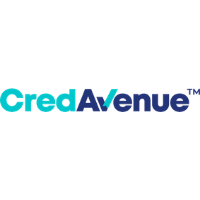
CredAvenue
View Brand PublisherHow CredAvenue is building infrastructure to power debt market through technology
In a conversation with YourStory, Harshwardhan Mittal, CTO, CredAvenue, talks about the platform and how it used technology to enable Rs 55,000 crore debt deals.
CredAvenue was founded with the view that debt markets presented a significant opportunity to be expanded at scale by leveraging technology, similar to the opportunity that the Indian equity markets presented nearly 25 years ago.
The company has achieved a significant milestone of enabling Rs 55,000 crore of debt deals. The platform also offers debt market participants a comprehensive set of products and solutions that facilitate transactions across a wide variety of products and solutions in this segment.
In a conversation with YourStory, Harshwardhan Mittal, CTO, CredAvenue, talks about how the company is leveraging technology to help the growth of India’s debt markets.
Edited excerpts from the interview:
YourStory (YS): Tell us a little bit about CredAvenue and what it aims to do?
Harshwardhan Mittal (HM): CredAvenue aims to deepen debt markets in India and other parts of the world by building a robust infrastructure.
India’s debt markets are still in the early stages as compared to developed countries. For example, less than 10 percent loans get securitised in India compared to more than 30 percent in the USA.
The reasons it has not taken off in India is the lack of underlying infrastructure, lack of transparency, and inefficient price discovery. There is also the fact that a lot of discovery is still happening one-on-one.
The issue is even more persistent the moment you look beyond the top rated corporates - for such entities access to debt markets is way more difficult as compared to their counterparts in developed and other emerging economies.
Through CredAvenue, we are trying to address each of the above problems so as to make debt markets more efficient and inclusive. That is the vision with which we have built CredAvenue. We think of it as not just another debt platform but a piece of credit infrastructure - in essence the impact and value proposition is way more significant and far reaching.
The two fundamental features of CredAvenue are a multi-platform/products approach and a life cycle engagement approach in your debt journey.
YS: Can you explain how CredAvenue is solving the challenges of India’s debt market and helping people be a part of the market with more volumes?
HM: As consumers, we go to banks for various loans. Loan evaluation involves a lot of documentation process, which differs from bank to bank. Also, there is no single marketplace where a customer can securely share these documents and get multiple loan offers. We have to deal with each bank one by one. That’s one of the reasons we end up talking to only a few banks to finalise a loan. This limits our ability to get best deals. If there was a standard process and a common marketplace where we could place our loan ask, we could have got loan offers from large number of banks/financial institutions and got best deal without much hassle.
If you take the same scenario to corporate borrowings, it becomes a lot more complex because assessing the credit of an individual is far easier.
With CredAvenue, we are building tools where we are able to represent borrowers profiles and their businesses in a standard way on the platform. We also bring it to large and diverse set of investors/lenders.
Not every lender or debt investor is the same. They all have preferences, rules, specific criteria and so on. The platform uses advanced analytics and proprietary model to arrive at the optimal order match thereby ensuring that for parties on both sides there is a risk-reward and requirement match.
We are not just building a technical platform; we are building a marketplace. Think of a mid-size corporate borrower - how many lenders/debt investors can they possibly access through offline engagement? Limited, right? To flip it the same is also true for large number of debt investors looking at opportunity. As a result, the pie itself remains small. What our platform does is efficiently connect such players on both sides thereby deepening the markets.
Our bond platform, Plutus, for instance, is enabling a large number of retail investors access such debt opportunity. This at an aggregate level means that we are deepening investor participation in debt markets.
The second problem is that today most processes are transactional in nature. Borrowers only wake up when they need money and many a times they are not even aware of the possibilities. This is problematic because overall debt raise is a time consuming process, and when you are in rush you can’t get best deals.
We have taken the entire life stage approach - which means that as a borrower, CredAvenue is your life long partner when it comes to debt. We engage with borrowers early on even before they have specific debt asks. Once they come on to the platform, we understand their wholistic profile and help them discover the gaps in their portfolio and recommend relevant product offerings to take care of their debt requirements as they evolve. We also connect them early to relevant investors so that the process can start early. We are trying to build a relationship between the borrowers and the investor so it goes beyond single transaction.
The third problem is that there are many solutions in the market now that are point solutions. Our approach has been to offer the entire range of debt products - both conventional and innovative ones through a single solution. We have specialised sub-platforms for loans, securitisation, bonds supply chain, and co-lending.
A one-point solution for the corporate means we represent your need when you come on the platform. And we help you choose the right instrument and connect you to large number of investors for the best outcome.
YS: Can we talk a little about the lender’s side? Please elaborate on the data analytics part and how CredAvenue is powering this?
HM: CredAvenue takes care of the end-to-end debt journey - discovery-investment- fulfilment.
Lenders or debt investors are constantly looking for the right borrowers to work with. With large number of borrowers and their debt requirements on our marketplace, we help investors discover relevant investment opportunities.
Once the investor expresses interest in a given opportunity and the borrower accepts it, we facilitate whole negotiation and decision making process on the platform. This is achieved via automating overall data/document collection, verification, and analysis. Investors are able to see standardised client investment report on platform and ask for more data as and when required. They are also presented with a lot of insights, market intelligence, and tools. For example, we provide various rating simulations and loss estimation models, which help in decision making.
Post disbursement, we help investors to monitor the performance of the portfolio, repayments, and collections on the platform. This is again aided with our strong data engineering and data science capabilities. Investors are presented with comprehensive set of reports and alerts. For example, we provide early warning signals about any potential issues with portfolio. In short, we help lenders throughout the journey till every single penny is paid off.
YS: Tell us about interoperability between various platforms and how does this benefit an investor or lender?
HM: Let’s start from the lender perspective. Most big lenders such as banks and NBFCs deal with a wide range of debt solutions. They have to work with different systems and platforms for each of these. That is the challenge.
We have taken the approach of deep integration, which essentially means that if say a bank does a one-time integration with CredAvenue, it can seamlessly navigate through multiple sub-platforms such that this becomes your single portal for multiple debt products. Through a one-time deep integration exercise, a bank can go live with multiple corporate borrowers (and vice versa) across products. So, if you are live on our co-lending platform, should you want to get onboard our supply chain platform, it would involve minimal TAT.
YS: Can you elaborate about how CredAvenue’s platform is a lot more secure? What about the regulatory and compliance aspects?
HM: The banking-financial industry is highly regulated and everything is under the RBI’s purview. So there is quite a bit of regularity and compliance requirement. Of course, we comply with these, have gone through industry’s leading certifications, and try to bring on board global best practices.
We also have a strong data governance programme and are complying to provisions of personal data protection bill in the Parliament.
YS: What’s next in terms of technology? Any new products or expansion plans in the offing?
HM: Technology has and will remain the core of our strategy and a key differentiator.
We have been at the forefront of innovations in product offerings and will continue to expand our bouquet. We just launched a secondary bond trading for example and there are many more in the offing.
The direction we are taking is to deepen debt market and build it in terms of supply and demand. So, we are going to integrate with more banks and lenders, make it easier for them to integrate to the platform - almost a plug and play integration tool kit approach!
On the borrowers side, we see challenges when it comes to the sharing of data. We are investing a lot to help get some of the data from public sources and directly from customer systems.
We are also looking to bring a lot more engagement modules for borrowers and investors such that it becomes their daily, one-stop log in portal.
Last year, we doubled up our technology team and continue to expand at this pace in the coming year crossing the 400 mark. Another interesting development has been the inbound interest we see from overseas markets for the product. Given the universal application, this is not surprising, and we will take this up eventually.







